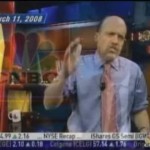The single most convenient untruth about the 2008 (and counting) financial crisis is that it was unforeseen. For two years policymakers have insisted “There was no way to know ahead of time” that the liquidity boom would come to a screeching halt. Yet even as the mainstream authorities failed to detect the economic earthquake moving below their own feet, somebody did “notice” well in advance. That person was EWI’s Bob Prechter.
Stress Test: How to Find the Safest Banks in the U.S. and Abroad
Banks of all sizes are riskier than they used to be (think about portfolios stuffed with derivatives, emerging market debt and non-performing commercial loans), so it makes good sense to have your own personal stress test to find out which you can trust. This special report gives you what you need to know — plus a list of the Top 100 Safest Banks in the U.S.
Applying Elliott Wave Theory to Recent Trades
Ralph Elliott, an American market analyst, discovered the basic principles in the 1930s studying the Dow Jones Index
Elliott Wave Tutorial
“Successful market timing depends upon learning the patterns of crowd behavior. By anticipating the crowd, you can avoid becoming a part of it.” I pulled this quote directly from the opening paragraphs of the free Elliott Wave Online Tutorial. It’s critical to your understanding of how markets really work. Now some might say, “What’s […]
Video: The Real-Time Power of Elliott Wave Analysis
Mainstream financial analysts always look for ways to explain market action through news stories and events. Conventional wisdom states that news and inter-market correlations cause market booms and busts, but such explanations rely on selective presentation of the data. In this video, Elliott Wave International’s Asian-Pacific Financial Forecast Editor Mark Galasiewski shows you how Elliott […]
Technicals vs. Fundamentals: Which are Best When Trading Crude Oil and Natural Gas?
If “fundamentals” drive trend changes in financial markets, then shouldn’t the same factors have consistent effects on prices? For example: Positive economic data should ignite a rally, while negative news should initiate decline. In the real world, though, this is hardly the case. Just read these four oil price headlines from July 22 and 23. (And get FREE access to EWI’s latest energy market forecasts!)
Quadrillion Dollar Debt: ‘Day of Reckoning’ Looms
A thousand trillion in debt can’t be wished away or swept under the rug. No one can “forgive” the debt. The consequences of unwinding this debt could be as massive as the dollar figure itself…
Understanding Robert Prechter’s ‘Slope of Hope’
What’s the opposite of climbing the “wall of worry”? Now is a good time to learn why it’s called the slope of hope.
The Bear Market and Depression: How Close to the Bottom?
“People are more bearish than I have ever seen them. This has to be a bottom.” The first half of this statement may well be true for many market observers. If one has been in the market for less than 14 years, one has never seen people this bearish. But 14 years is a short time. What about the past 100 years of stock market history?
20 Questions with Robert Prechter: Long Decline Ahead
The following article is an excerpt from Elliott Wave International’s free report, 20 Questions With Deflationist Robert Prechter. It has been adapted from Prechter’s June 19 appearance on Jim Puplava’s Financial Sense Newshour. Jim Puplava: I want to come back to government spending, but first I want to move onto the stock market. In your […]
